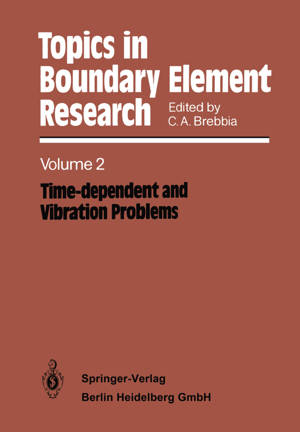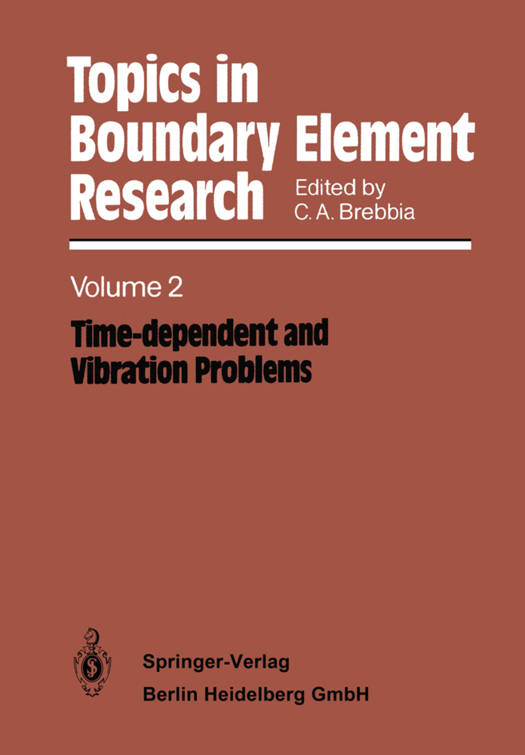
- Afhalen na 1 uur in een winkel met voorraad
- Gratis thuislevering in België vanaf € 30
- Ruim aanbod met 7 miljoen producten
- Afhalen na 1 uur in een winkel met voorraad
- Gratis thuislevering in België vanaf € 30
- Ruim aanbod met 7 miljoen producten
Zoeken
Topics in Boundary Element Research
Volume 2: Time-Dependent and Vibration Problems
€ 52,95
+ 105 punten
Omschrijving
This series has been developed in response to the interest shown in boundary ele- ments by scientists and engineers. Whilst Volume I was dedicated to basic principles and applications, this book is concerned with the state of the art in the solution of time-dependent problems. Since papers have recently been published on this im- portant topic it is time to produce a work ofa morepermanent nature. The volume begins with a chapter on the Fundamentals of Boundary Integral Equation Methods in Elastodynamics. After reviewing the basic equations of elasto- dynamics, the wave equation and dynamic reciprocal theorems are stated and the direct and indirect boundary element formulations are presented. Eigenvalue problems are discussed together with the case of the Fourier transformations. Several applications illustrate the etfectiveness ofthe technique for engineering. Chapter 2 examines some ofthe various boundary integral equation formulations available for elastodynamic problems. In particular the displacement-traction for- mulation is compared with the displacement-potential case. The special character- istics ofthe elastodynamics fundamental solutions are discussed in detail and a criti- cal comparison with the elastostatics case is presented. While the chapter is not meant to be a complete review of the work in the field, the original presentation of the problern and the suggestions for further work make an important contribu- tion to the development ofthe method.
Specificaties
Betrokkenen
- Uitgeverij:
Inhoud
- Aantal bladzijden:
- 262
- Taal:
- Engels
- Reeks:
- Reeksnummer:
- nr. 2
Eigenschappen
- Productcode (EAN):
- 9783662281420
- Verschijningsdatum:
- 1/01/1985
- Uitvoering:
- Paperback
- Formaat:
- Trade paperback (VS)
- Afmetingen:
- 170 mm x 244 mm
- Gewicht:
- 449 g

Alleen bij Standaard Boekhandel
+ 105 punten op je klantenkaart van Standaard Boekhandel
Beoordelingen
We publiceren alleen reviews die voldoen aan de voorwaarden voor reviews. Bekijk onze voorwaarden voor reviews.










